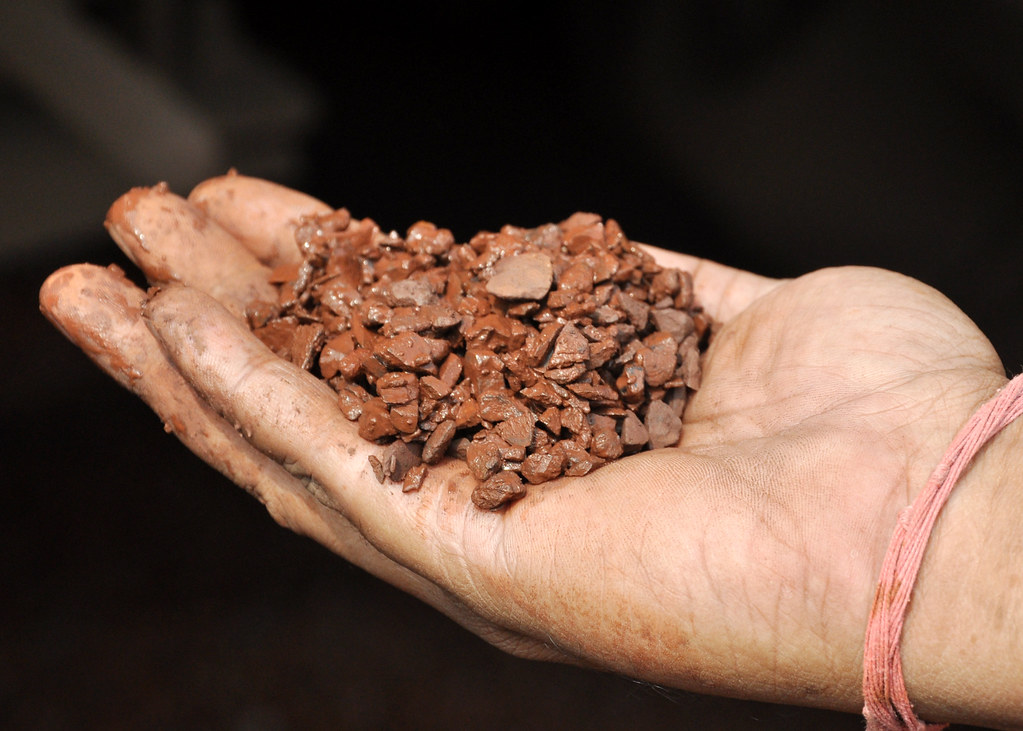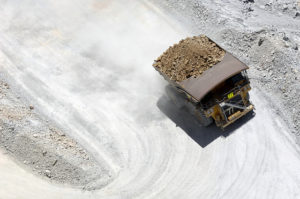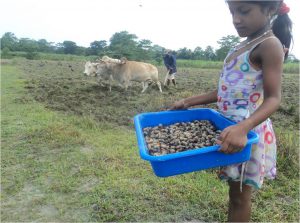Pressure to increase raw material production since the early 2000s to supply fast-industrialising countries like China has concentrated investment in extractive sectors and caused conflicts over land use, water, and other natural resources, according to a new UN study.
“This impasse is already making itself known in the energy sector, which competes with agriculture and urban development,” the report by the United Nations Environment Programme (UNEP) said. The study also pointed to the drastic increase in the consumption of fossil fuels, metals, and other materials that intensify climate change and pollution and affect biodiversity.
China is the most remarkable example of rapid and intensive growth in demand for primary sources, and this has exacerbated environmental stress, said the report entitled Material flows and resource productivity on a global scale which was produced by the International Resource Panel (IRP) within UNEP.
China’s industrial and urban transformation also generated an unprecedented demand for metal, steel, concrete, energy, and construction materials. The increase in Chinese consumption “reverberated” across the entire world economy, particularly in commodity exporting Latin American countries.
According to Heinz Schandl, one of the study’s lead researchers, the growth in Chinese demand affected Latin America by raising commodity prices for a long time.
“This in turn caused the extractive sector to become very profitable in regions such as Latin America, which possess many resources,” Schandl told Diálogo Chino. “The relationship can be seen as complementary and symbiotic, but often equity is not considered. The extractive sector ends up concentrated in the hands of a small stratum of the population,” said Schandl, who also leads a research group on sustainable use of natural resources in the Australia-based Commonwealth Scientific Industrial Research Organisation (CSIRO).
The impact of the crash in commodity prices on economic growth in Latin America has been stark. Revenue shortfalls in the public and private sectors make societies poorer and affect public services in countries dependant on primary exports. “The important point is whether governments will be able to manage the fluctuation in raw materials prices and implement governance mechanisms to deal with these imbalances,” maintained Schandl.
Economic contraction
This week the UN’s Economic Commission for Latin America and the Caribbean (ECLAC) announced its prediction that the region’s GDP will contract by 0.8% in 2016, an even greater drop than the 0.5% registered in 2015. Alicia Bárcena, executive secretary of ECLAC, said that not only has China become an important financial partner in the region, it has also shown willingness to develop a more cooperative relationship.
“China is fully committed to a great environmental drive and has already approved funds to implement Agenda 2030. It will not just continue to be a purchaser of raw materials, but will help productive diversification,” Bárcena said. ECLAC said the region needed to turn opportunities presented by the China relationship to its advantage.
The UNEP study said that in a world where there are increasing concerns about climate change and food security, there is a need to “create more with less”.
The sustainable use of natural resources is central to achieving the Sustainable Development Goals (SDG) outlined in the UN’s Agenda 2030. Worldwide per capita consumption of raw materials rose from 6.4 tonnes in the 1970s to almost 8 tonnes in 2000. However, in the first decade of this century, this figure hit 10 tonnes, according to the IRP report. In 2010, around 30 billion tonnes of raw materials were extracted around the world to produce the 10 billion tonnes of goods sold.
The report said China’s use of natural resources continues to be “not so efficient” and that political and financial efforts were needed in order to improve efficiency since the current level of resource consumption has surpassed the planet’s limits.
Countries exporting raw materials have few incentives to improve their efficiency, according to Schandl. “Primary producers should have distinct political responses that attempt to mitigate increasing social inequality, take care of their manufacturing industries, and prepare themselves for times when their resources will be exhausted,” he said.
When asked how China could change the nature of its relationship with Latin America and no longer only be an importer of primary goods, Schandl emphasised China’s potential to create and export environmentally sustainable technologies, particularly in the energy and transportation sectors. “These sectors have received many investments in China, and maybe in the future, areas outside China will receive as well,” he said, referring to environmental measures outlined in the new Chinese five-year plan.
Reprimarisation
Manuel Pulgar Vidal, the former Peruvian minister of the environment and president of the COP20 climate conference told the Climate Interview Programme that technology transfer is a pending issue for the region, because it still needs to be fair. Pulgar Vidal also emphasised carbon pricing as a policy gaining increasing traction in Latin American countries.
However, the minister rejected the idea that Peru’s mining sector (in which China is the main investor) was responsible for exacerbating climate change.
“In the case of Peruvian mining, whether you like it or not, there is no effect on the climate. In its extractive phase, mining has no climatic consequences. During its metallurgic phase, it can have climatic consequences from greenhouse gas emissions, but its extractive part does not generate emissions,” he stated.
Meanwhile, Hernán Carlino, an Argentine climate policy specialist from the Centre for Studies on Global Climate Change (CECcG), admitted that “the re-primarisation of the economy was concerning” in Latin America. He too suggested countries try to diversify their economies.
“There are structural problems that are common to the region. They constantly exploit their natural resources, add little knowledge, and do not add value to their products. Climate changes leverage historical weaknesses,” Carlino told the Climate Interview Programme.
In his view, it is impossible to mitigate climate impacts without correcting the region’s structural problems. “Climate policy is led by ministries of the environment, and there is a lack of consistency in public policy. We need to have proper planning. We will not reach the climate goal if we do not also deal with the goal of ending poverty in the region, and this involves income distribution, job generation, and productive diversification,” he added.







